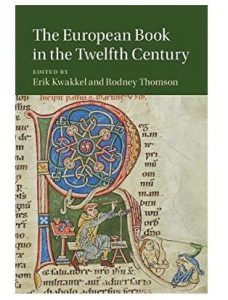Vient de sortir (juillet 2018)

The European Book in the Twelfth Century
Edited by Erik Kwakkel, University of British Columbia, Vancouver , Rodney Thomson, University of Tasmania
Publisher : Cambridge University Press
Online publication date : July 2018
Print publication year : 2018
Online ISBN : 9781316480205
90£, environ 107€ en version papier.
Environ 60€ en version kindle, dont un aperçu est disponible ici Kwakkel & Thomson, The European Book in the Twelfth Century
The ‘long twelfth century’ (1075–1225) was an era of seminal importance in the development of the book in medieval Europe and marked a high point in its construction and decoration. This comprehensive study takes the cultural changes that occurred during the ‘twelfth-century Renaissance’ as its point of departure to provide an overview of manuscript culture encompassing the whole of Western Europe. Written by senior scholars, chapters are divided into three sections: the technical aspects of making books; the processes and practices of reading and keeping books; and the transmission of texts in the disciplines that saw significant change in the period, including medicine, law, philosophy, liturgy, and theology. Richly illustrated, the volume provides the first in-depth account of book production as a European phenomenon.
Delivers the first comprehensive study of the European book in the historical period known as the ‘long twelfth century’ (1075–1225)
Brings together a number of interrelated cultural-historical events such as monastic reform and the introduction of Greek and Arabic science and philosophy to place in context the development of the manuscript and book during the ‘twelfth-century Renaissance’
Chapters by leading scholars offer a multi-disciplinary approach to studying the phenomenon of the book in the twelfth-century from a European point of view
